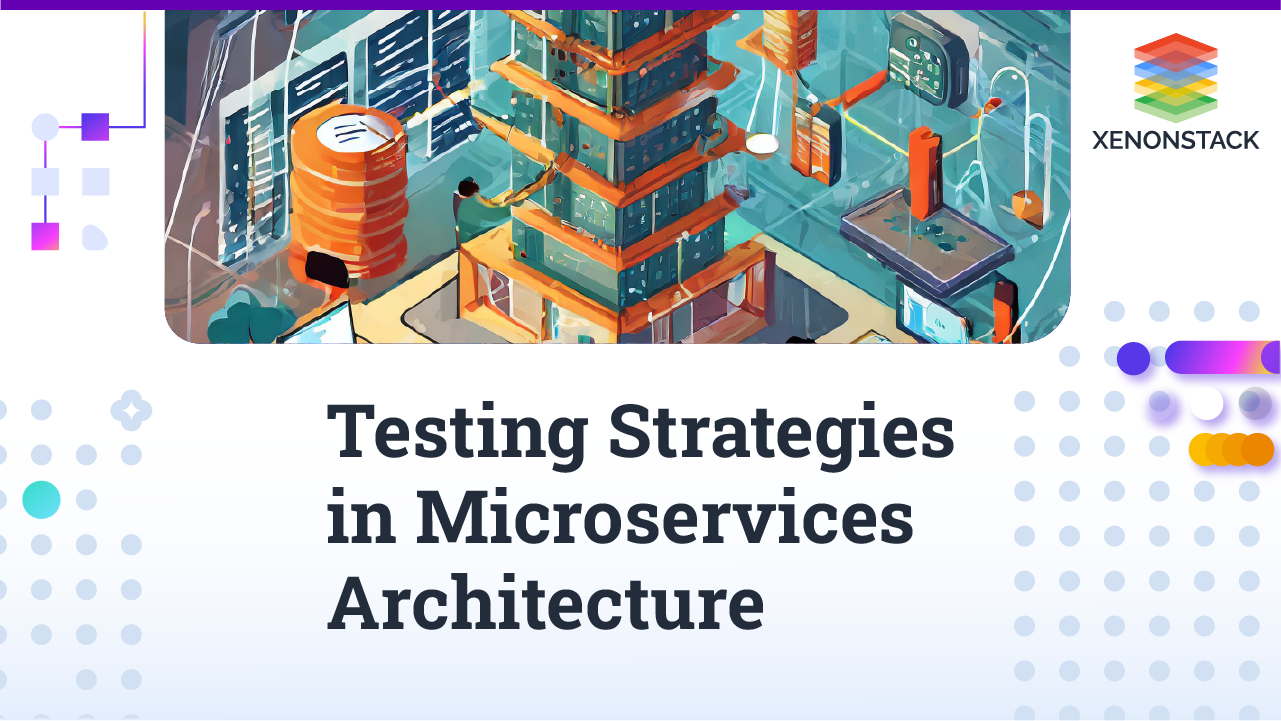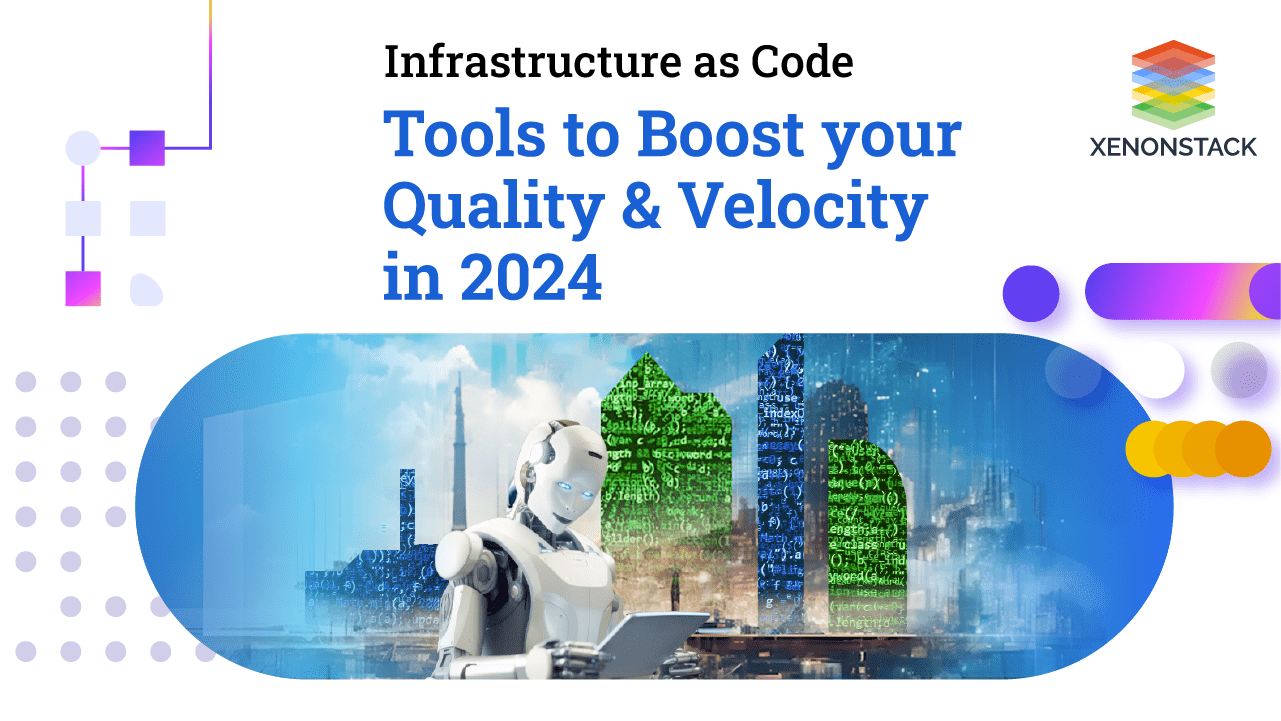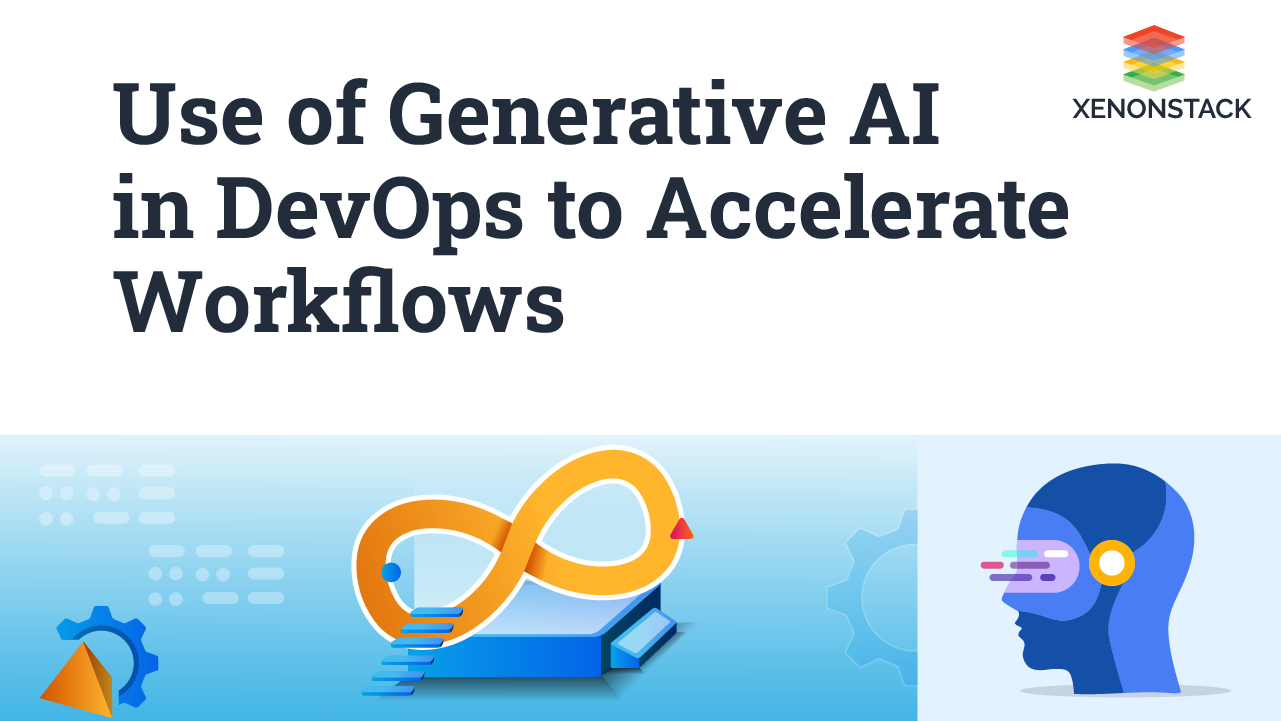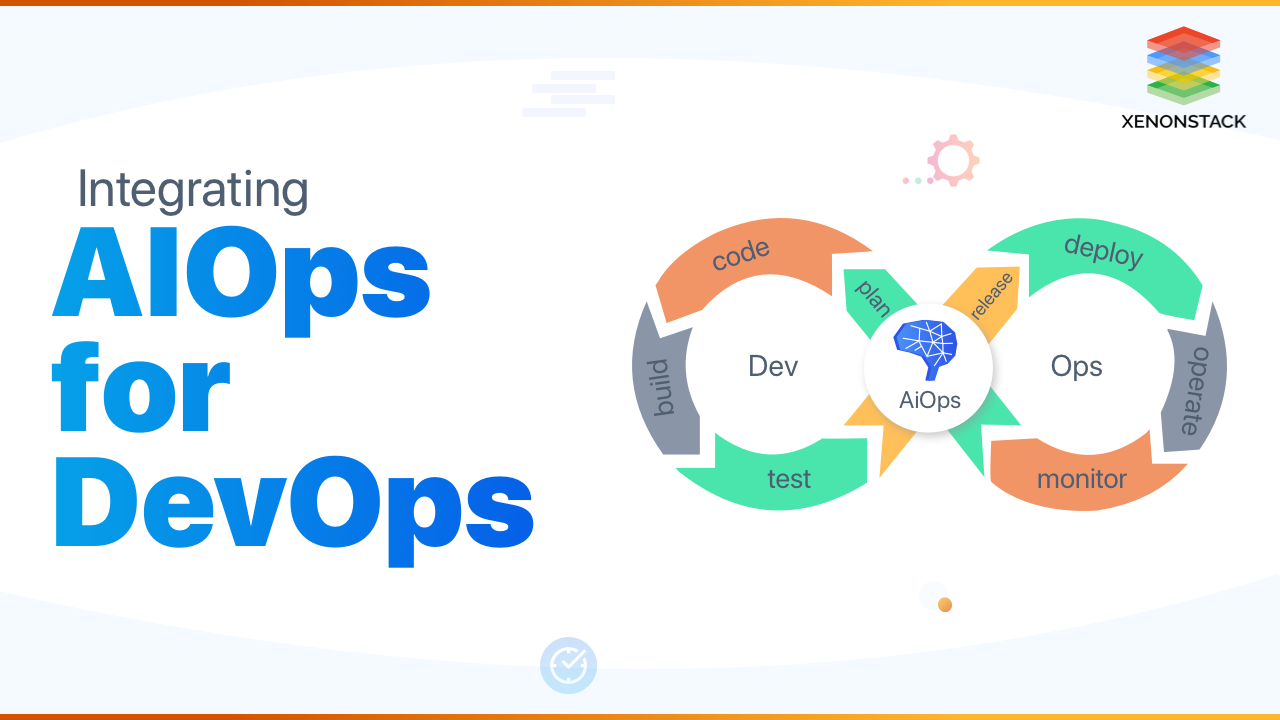
Introduction to AIOps and DevOps
While orchestration and monitoring play key roles in DevOps, the emerging practice of using artificial intelligence (AI) to support and automate operational roles by delivering real-time information about what happens to your infrastructure seems to be equal. There is a need to create a straightforward platform that provides orchestration, model management, and ease of delivery to enable rapid replication of model development and repeated delivery of models. This will improve the productivity of the team developer and enable the repetition of concepts in the product.
What is DevOps?
DevOps is derived from two terminologies, i.e., Dev (development) and Ops (operations). DevOps is a fusion of people, technologies, and processes always to provide value to customers. In simple words, DevOps is a set of practices, tools, and cultural philosophies that automate and integrate processes between software development and IT teams. On the other hand, it improves flexibility, efficiency, and agility and maintains infrastructure for developments and deployments. It emphasizes team empowerment, team communication, collaboration, and technical automation.
Infrastructure Automation Tools to provide automation to infrastructure by keeping up-to-date configurations of the on-premise and cloud environments. Click to explore about our, Top DevOps Trends for 2023
What is AIOps?
AIOps is Artificial Intelligence for IT Operations applications AI and related domains such as natural language processing, machine learning, etc. It refers to how the IT team manages data and information from an application environment - here, AI. It is the next generation of IT operation analytics. It integrates a huge amount of data and uses machine learning to automate IT processes, including event-related, confusion detection, and cause determining.
There are five types of algorithms that AIOps will monitor:
- Data Selection: Taking a large amount of unwanted and noisy IT data generated by a modern IT environment and selecting data features that indicate a problem, usually filtering up to 99% of this data.
- Pattern Discovery: Linking and finding relationships between selected, logical, and integrated data elements for further analysis.
- Inference: Identifying the underlying causes of an incident, problem identification, and recurring issues so that you can take action on the findings.
- Collaboration: Informing relevant operators and teams, improving the interaction between them, especially when individuals are dispersed geographically, and maintaining event data that can accelerate the discovery of similar problems in the future.
- Automation: Automate response and remediation as much as possible to make solutions more precise and quick.
AIOps are a way to automate the system with the help of ML and Big Data. MLOps are a way to streamline extracting ML systems and filling in gaps between groups, giving all project participants more clarity.
A platform solution that solvers known IT issues and intelligently automates repetitive tasks. Taken From Article, AIOps: Artificial Intelligence for IT Operations
DevOps vs AIOps | Know the Difference
DevOps is a great way to improve the IT and operating systems that accelerate development and deployment. The DevOps approach helps development and performance teams to develop partnerships with shared love to achieve organizational goals. By applying the principles of DevOps, IT teams can work together very well.
AIOps is an approach that automates IT Operations and AI model-driven auto-remediation. This automated system improves the IT transformations driven by DevOps and improves the organization's agility.
The value of AIOps will grow with modern traditional business enterprise systems running across multiple cloud providers and needing to be monitored with real-time visibility.
Why merge AIOps and DevOps?
- The direct integration of Dev and Ops systems into a model for AIOps as a whole slide the potential conflict in that visual interface. By ensuring that Dev teams understand the environment better and that Ops have a full view of when and how engineers make changes and distribution in production, this complete vision ensures overall project success and achievement of its objectives to accelerate growth and response.
- Moving to cloud computing can present challenges, especially on a scale where it is not possible (or desirable) to deploy IT wholesale in the cloud.
- Another reason is that AIOps does not replace existing monitoring, log management, desktop service, or tools. Instead, it supports different domains, consumes and integrates information into all, and provides useful output to ensure a synced image is available in all tools. These tools are valuable, but accessing the right information when required can be hard.
- The concept of integration with a strong code struggles to keep pace with the changing environment of modern IT environments.
- AIOps here provides a more flexible way to assemble all of these different ideas and become one complete understanding of what is important for IT Ops teams to know about.
Kubernetes simplifies Continuous Integration and Continuous Deployment ensuring data consistency. It focuses on building and delivering software. Click to explore about, AIOps for Monitoring Kubernetes
Integrating AIOps in DevOps
AIOps easily integrates with many available tools and processes, helping teams take full advantage of the many data streams generated by different applications and infrastructures. What AIOps do is digest all these different data points and analyze them to understand the various relationships within the data and effectively monitor the system to ensure proper performance at all times.
What are the Benefits of Integrating AIOps in DevOps?
With the advent of automation, SREs, and developers can increase speed and collaboration, ultimately saving organizations time, money, and resources. DevOps teams can pave the way from development to production, and AIOps help teams respond automatically to changes in the way the production facility works. Machine learning helps here by detecting anomalies, predicting performance issues, diagnosing the underlying cause, and much more - providing guidance on where DevOps teams should focus their efforts to improve workflow and make the right decisions.
AIOps delivers benefits to DevOps teams and developers and the IT Ops' expected beneficiaries. Some features of AIOps that are beneficial are a self-healing feature, integration capabilities with the professional bots and managing end-to-enders, saving developers time, increasing productivity, and reducing turnaround times for requests. Most importantly, AIOps creates an environment where code is always ready for release.
What is the Future Aim of Integrating AIOps in DevOps?
The battle is gearing up as AIOps change from infancy by coming up with more success stories. DevOps is replacing the traditional IT departments, but the challenges they face are designed to address more, and that is why we need systems designed for these new challenges. In this regard, AIOps will change in the coming years beyond our vision of empowering DevOps to embrace modern scale and speed.
What are the Challenges for Integrating AIOps in DevOps?
- Due to the many benefits of AIOps, it is transforming the roles and responsibilities of IT teams. Employees see this as a threat as they believe it may lead to their being reinstated or losing their job.
- A proper understanding of AIOps is required to automate operations successfully. Some tools automate most of the tasks, but it is not completely autonomous, which means a person who fully understands their operation is needed in the organization.
- Providers of AIOps solutions need to embrace the real challenges customers face with tools, information, and culture; map out the maturity and expectations, and build solutions that work with clients in the right way while providing the path to their desired end.
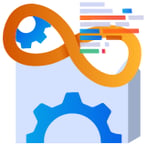
Conclusion
When it comes to slow-moving businesses, AIOps is changing the game. AIOps challenges IT service management, and the trend will continue. AIOps and DevOps can be used in combination to avoid problems, improve customer experience, save money, and free up IT staff to focus on developing high-quality solutions instead of maintaining legacy systems. The visibility and strategic importance of the IT department within the company grow as operational, and availability requirements are raised.
- Discover more about AIOps Solutions for Telecom Industry
- Explore here about DevOps on the Google Cloud Platform
- Read here about DevOps for Databases
